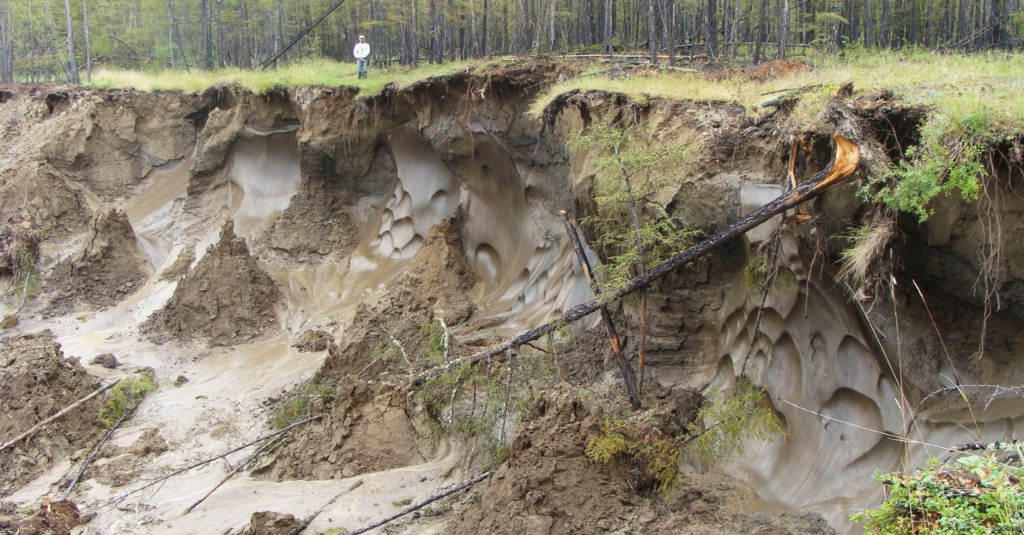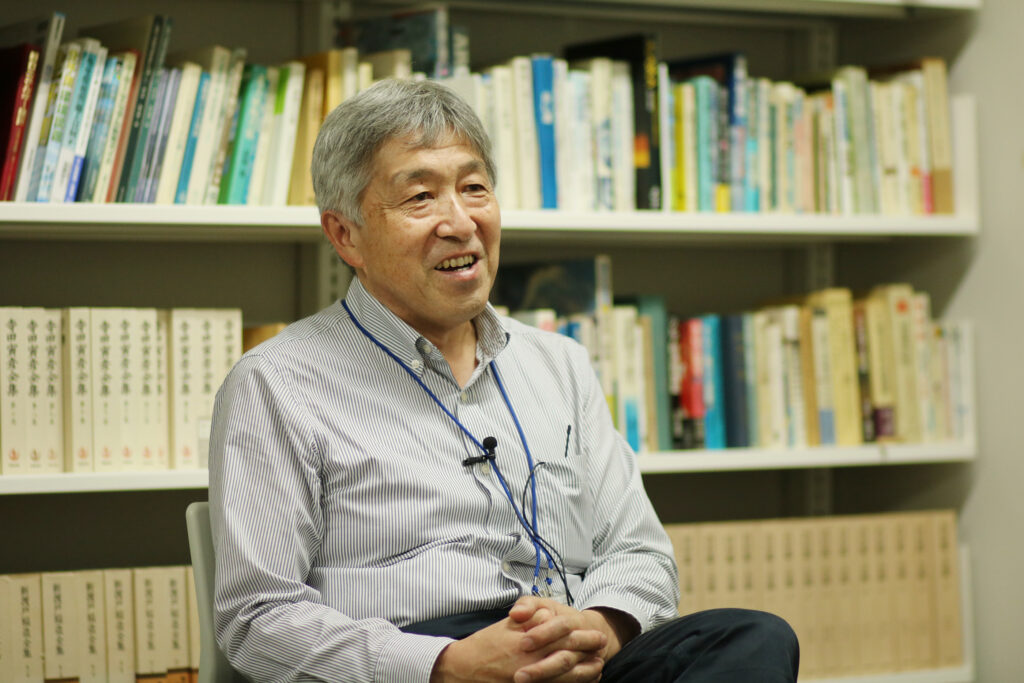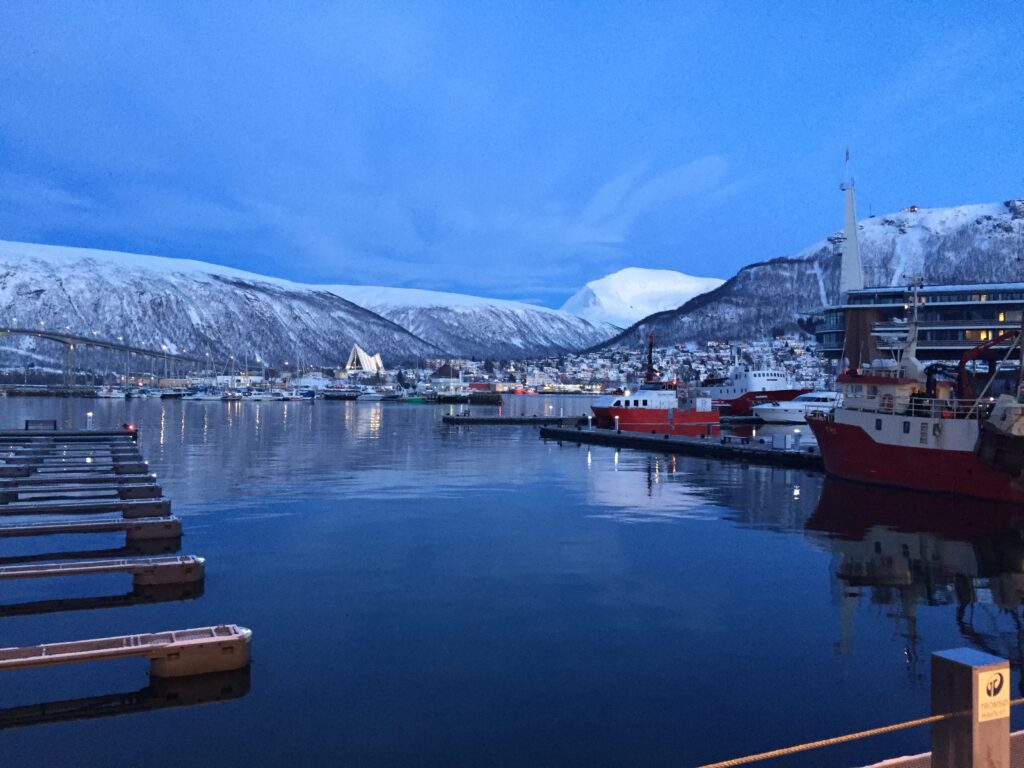Development of Arctic Sea Routes and environmental conservation
Research Highlight | February 01, 2023
This article first appeared in the special feature Understanding the Impact of Climate Change.
15 questions for climate change researcher Dr. Otsuka (with subtitles).
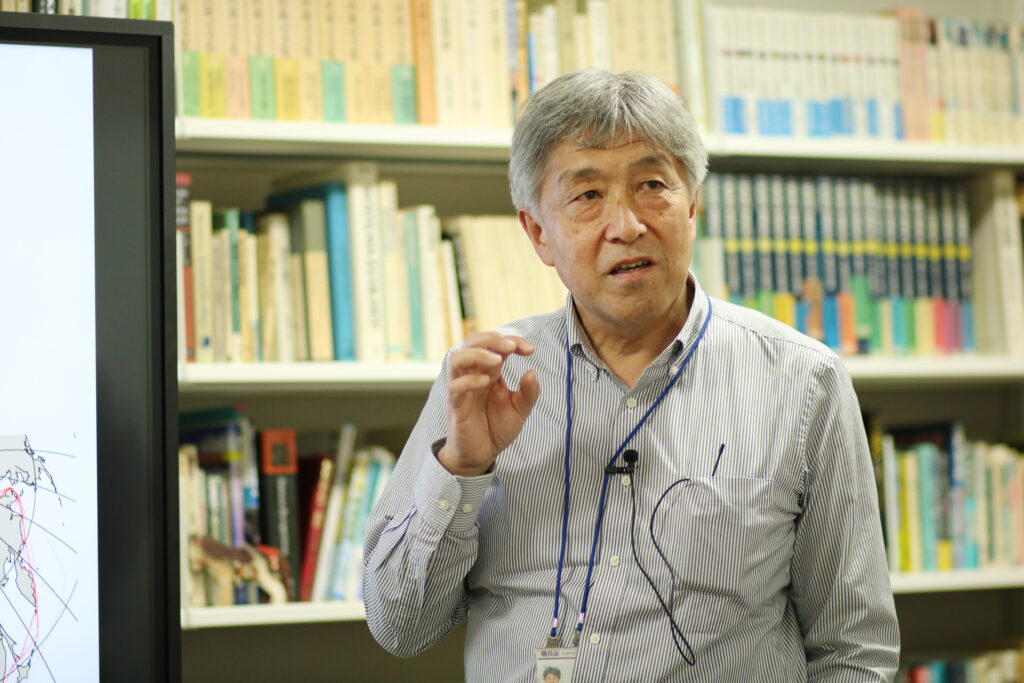
Professor Natsuhiko Otsuka
Arctic Research Center, Hokkaido University
(Photo by Aprilia Agatha Gunawan).
The Arctic region is where the effects of climate change are most noticeable. With the decrease in sea ice, the Arctic region has become more accessible than before, leading to the development of natural resources and tourism. We asked Professor Natsuhiko Otsuka of the Arctic Research Center about the challenges surrounding the development of Arctic Sea Routes.
The Arctic
The major difference between the Arctic and Antarctica is that the Arctic region is home to 4 million people and has industry. However, when it comes to the natural environment, it is not an easy place to observe and conduct research, because of its cold and extremely harsh environment—hence, there is still much we do not know about the region. While researchers at the Arctic Research Center study the Arctic from a variety of angles, my research focuses on whether the Arctic Sea Route along the Russian coast is safe, whether it is of sufficient value, and how it affects the environment.
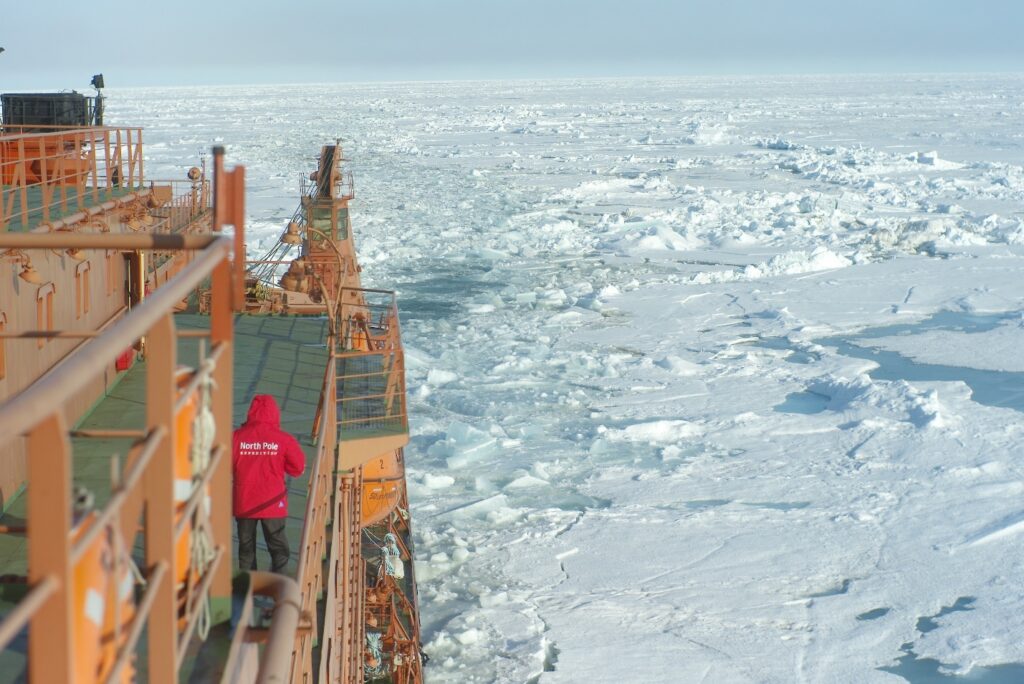
The Arctic Ocean, seen from a Russian nuclear-powered icebreaker, is covered with thick sea ice. In this situation, only an icebreaker can navigate the Arctic Ocean (Photo courtesy of Hiroshi Utsumi, Institute of Arctic Research and Observation).
The Arctic Sea Route is attracting attention
There are several reasons why the Arctic Sea Route has attracted so much attention. First, due to recent global warming, the Arctic Sea Route is not necessarily closed by ice. The Arctic region is warming about four times faster than other parts of the globe. In recent years, the Arctic Sea Route along the Russian coast has been ice-free every summer. Furthermore, a 2008 U.S. report has brought attention to underground resources such as oil and natural gas in the Arctic region. With its large reserves, countries are interested in the Arctic as “an energy source that does not depend on the Middle East” and are paying attention to the Arctic Sea Route for the transportation of underground resources.
The Arctic Sea Route actually began to be used in the 1990s. With the collapse of the Soviet Union, Russia opened the Arctic Sea Route to foreign vessels as part of national policy. It was not until around 2010 that the route began to be used for international commercial purposes.
Advantages and Challenges of Arctic Sea Route
If the Arctic Sea Route along the Russian coast becomes available, the sea transport distance between Europe and East Asia will be shortened by about 40%, compared to the Suez route via the Middle East and the Mediterranean. This would drastically reduce fuel consumption and dramatically improve transportation costs and speed. Reduced fuel consumption will also lead to reduced emissions of greenhouse gasses and pollutants. In addition, the proximity of Europe and East Asia could lead to new economic and cultural exchanges and international relations.
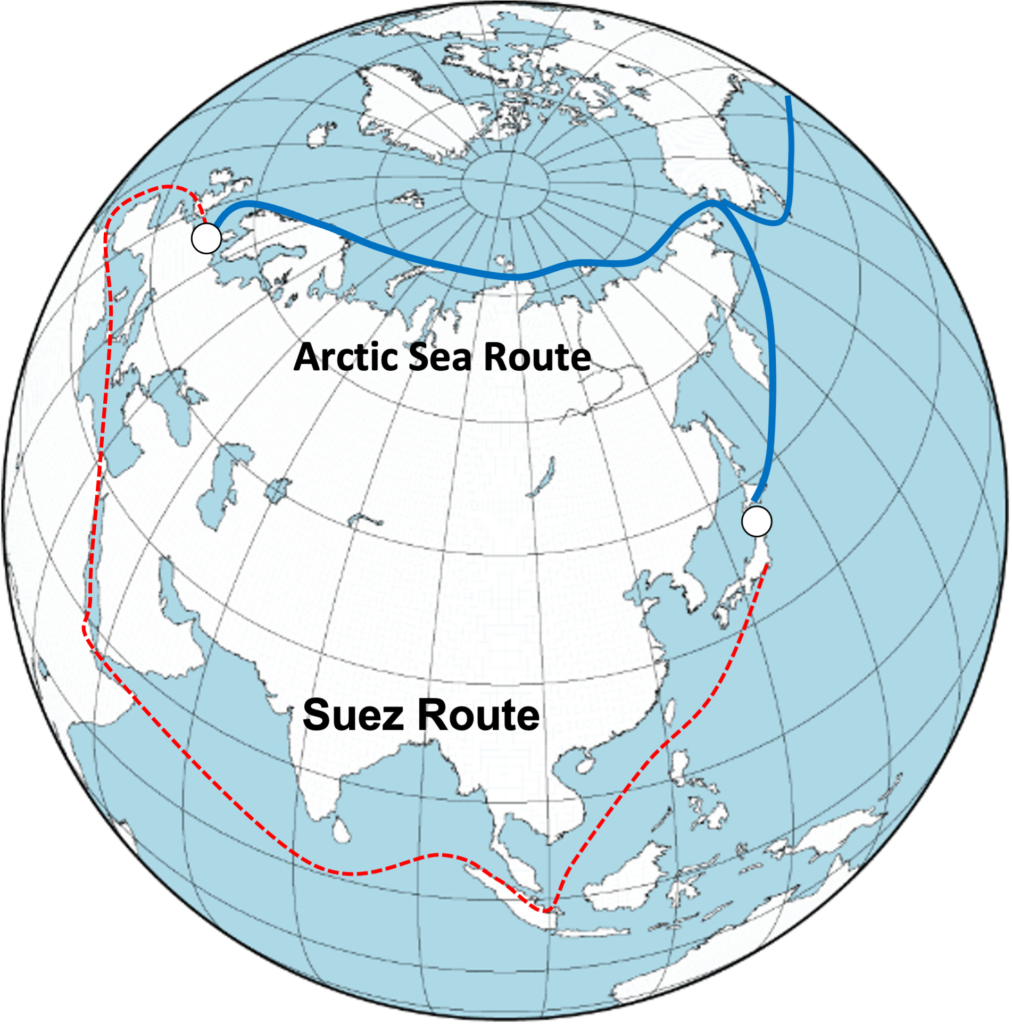
The Arctic Sea Route (blue) is about 40% shorter than the Mediterranean Sea/Suez Canal route (red), which is expected to reduce fuel consumption and transportation costs and increase transportation speed.
On the other hand, the passage of ships can have a negative environmental impact. If an accident occurs in the Arctic Ocean, there are risks such as fuel spills, which is not a good thing. In addition, sea ice dynamics are still not easy to predict: For example, in 2021, there was an incident in which ice suddenly covered the Arctic Ocean, trapping about 20 cargo ships in the ice. The political situation surrounding Russia is another source of instability.
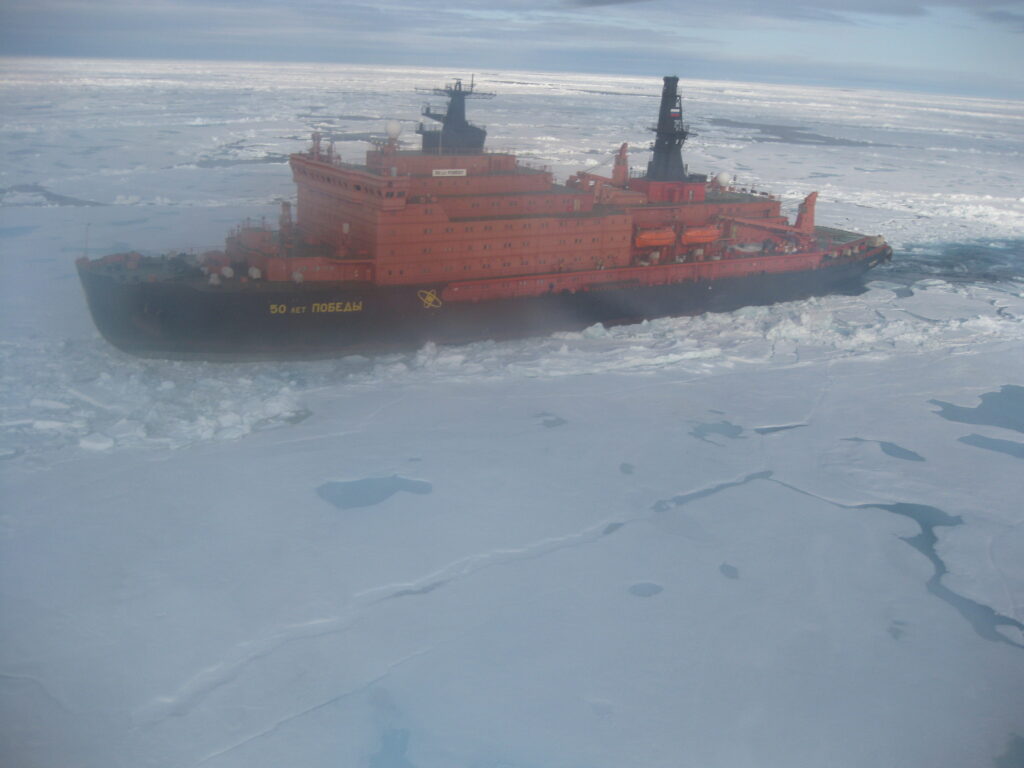
Russian nuclear-powered icebreaker. Tankers and other vessels need to be led by nuclear-powered icebreakers to navigate the Arctic Sea Route during periods of thick ice (Photo courtesy of Hiroshi Utsumi, Institute of Arctic Research and Observation).
Impact on Indigenous Peoples
Many indigenous peoples live in the Arctic region. Global warming and the utilization of the Arctic Sea Routes will have many impacts on indigenous peoples. For example, the traditional hunting of whales and seals is becoming more difficult due to the loss of sea ice. Furthermore, tourism cruises in the Arctic region are also attracting attention, and there are concerns about the environmental and cultural impacts of the influx of tourists. On the other hand, some indigenous people see the development of the Arctic Sea Route as an opportunity, and are seeking to export reindeer meat by utilizing their traditional reindeer herding. The utilization of the Arctic Sea Route is not simply a matter of transporting resources, but also involves complex social issues such as these.
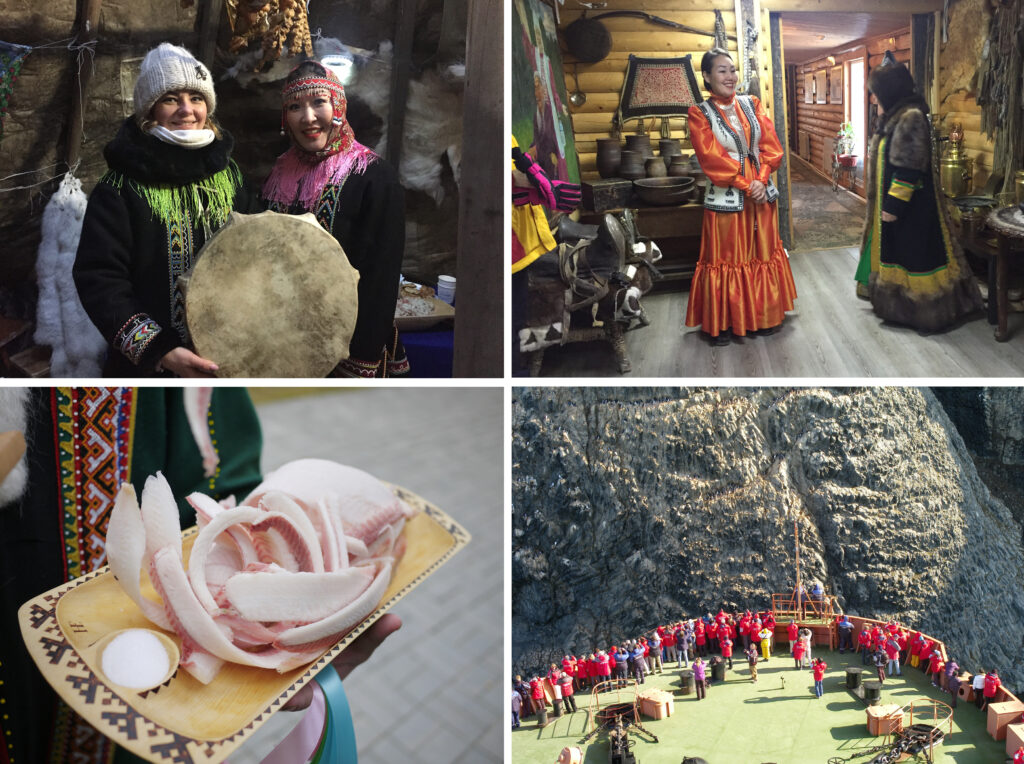
(Upper left) People wearing the traditional clothing and holding a drum of indigenous people at a winter event (Norilsk, Russia). (Upper right) A female shaman (Yakutsk, Sakha Republic). (Lower left) Stroganina, a traditional dish of frozen freshwater fish (Salekhard, Russia). (Photos by Natsuhiko Otsuka).
(Lower right) Tourists on a cruise ship observing a flock of seabirds perched on a rock face (Franz Josef Land, Russia). (Photo courtesy of Hiroshi Utsumi, Institute of Arctic Research and Observation).
Environmental changes felt locally
I myself do not conduct research by visiting glaciers, but I visit coastal towns and ports to study local economic activities and use of shipping routes. I hear from local people that forest fires are becoming more serious, and that the frozen ground is melting to the point where roads are being destroyed. In fact, 60% of Russia’s land is permafrost, and accidents such as fuel tanks being destroyed and oil spills due to the melting permafrost have occurred in 2020. In addition, when developers develop natural resources, they also need to improve their living environment, so cell phones and the Internet will be widely available even in remote areas.
Aiming for both utilization and environmental preservation
My research targets the economics and environmental impact of the Arctic Sea Route, as well as the performance required for ships and the impact on logistics networks. For example, I utilize satellite observations to monitor ice and ship movements and to search for safe routes. Also, I work with companies to develop economically rational business models. As a result of these studies and efforts by researchers, for example, there is an international agreement not to use heavy oil as fuel for ships. Also, they are considering restricting passages when and where whales and seals raise their young. However, in order to do so, we must first clarify the ecology of these animals in the Arctic region. Fortunately, Hokkaido University has a diverse range of researchers from oceanography, sciences, and political sciences, so we can collaborate with them to advance our research.
My own research goal is to provide knowledge on how to make good use of the Arctic environment while preserving it. I believe that the ice in the Arctic Ocean will continue to decrease over the next few decades, and that the Arctic Sea Route will be utilized more and more. I believe that research on safe operation of the Arctic Sea Route is particularly important, because once an accident occurs, it will lead directly to environmental pollution and will no longer be economically rational.
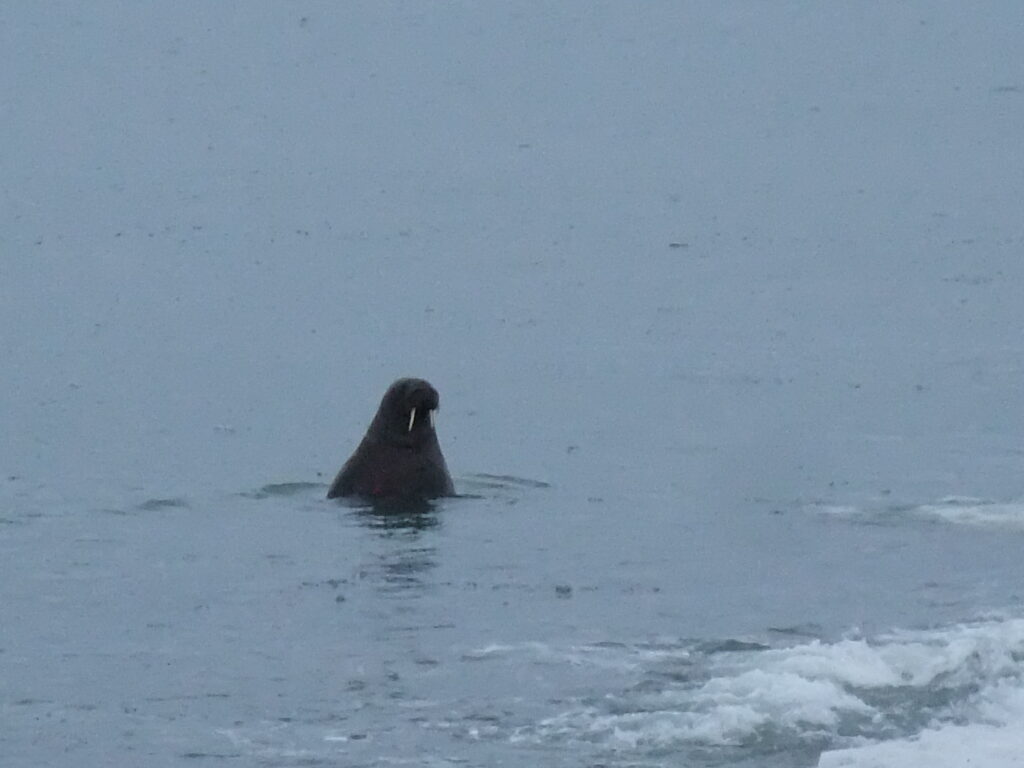
A walrus, an endemic species in the Arctic Ocean (Photo courtesy of Hiroshi Utsumi, Institute of Arctic Research and Observation).
The Arctic region is connected to the rest of the world.
As I mentioned earlier, the Arctic region is warming about four times faster than the global average. Therefore, various environmental effects will appear there earlier than in other places. If we can find appropriate countermeasures, I believe they will be useful in many other places in the world, including Japan. The oceans on the globe are interconnected and the wind blows from the North Pole. It is quite possible that the consequences of climate change in the Arctic will be a remote cause of extreme weather events such as heat waves and severe winters around the world. I hope that you will not think of the Arctic as a distant topic, but rather think of it as a global issue. It is also important not to confine yourself to your own field, but to collaborate with people in various fields to tackle common issues. Only by doing so will we be able to provide results that are actually useful to society.
I want more people to see the Arctic regionThe Arctic region may seem like the ends of the world, but in fact, it is relatively easy to visit the region for sightseeing. It is actually quite easy to reach, although it is a bit of a challenge in the middle of winter. I have been to Iceland often for conferences, and the nature there is very dynamic and spectacular. It is fascinating to experience the lifestyle and food culture unique to the cold climate. I hope that as many people as possible will see the wonderful environment of the Arctic, take home with them what they feel there, and make their daily lives a little more eco-friendly. |
Written by Naoki Namba
Part of the special feature Understanding the Impact of Climate Change

